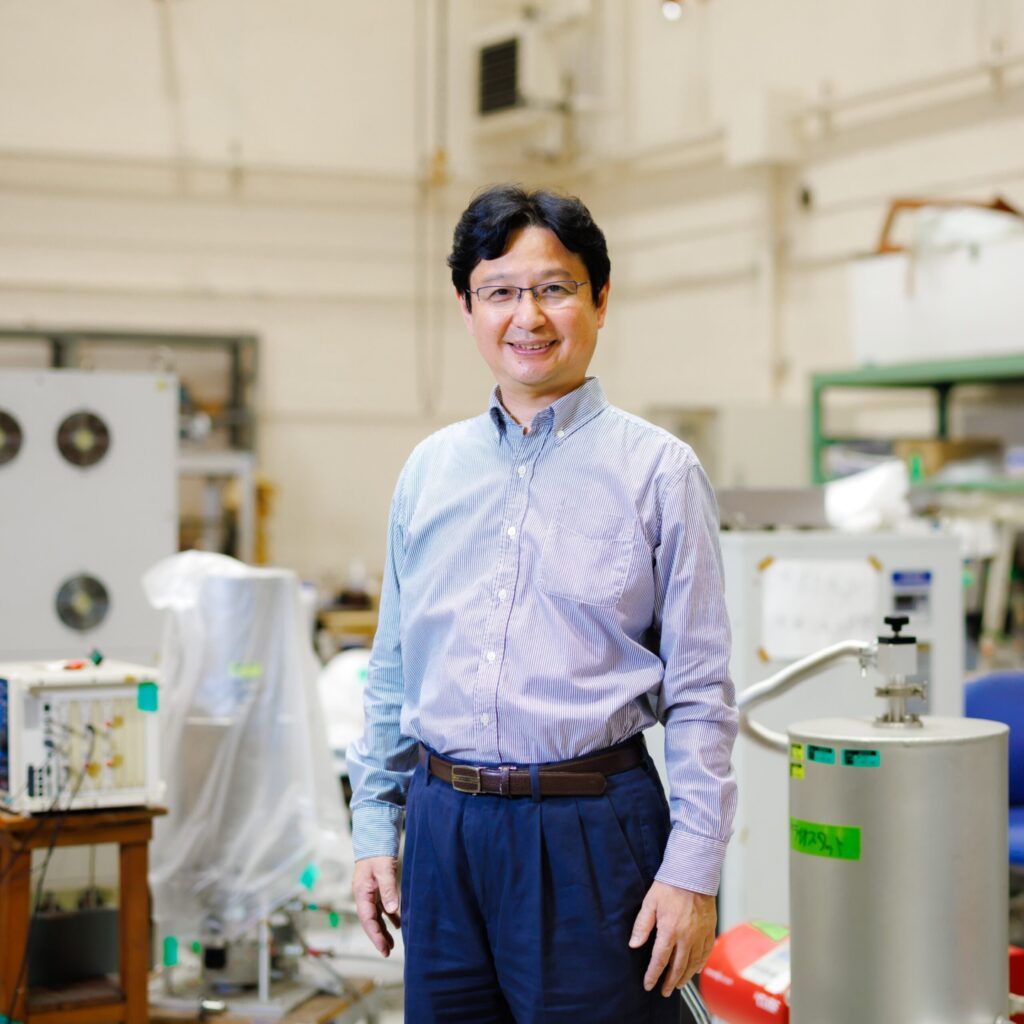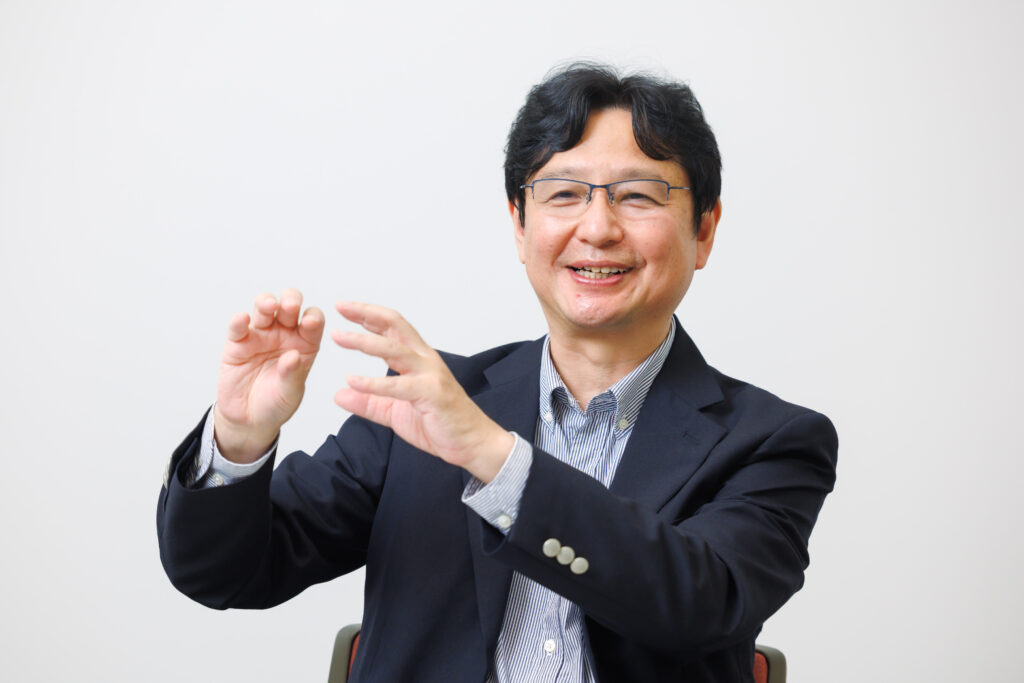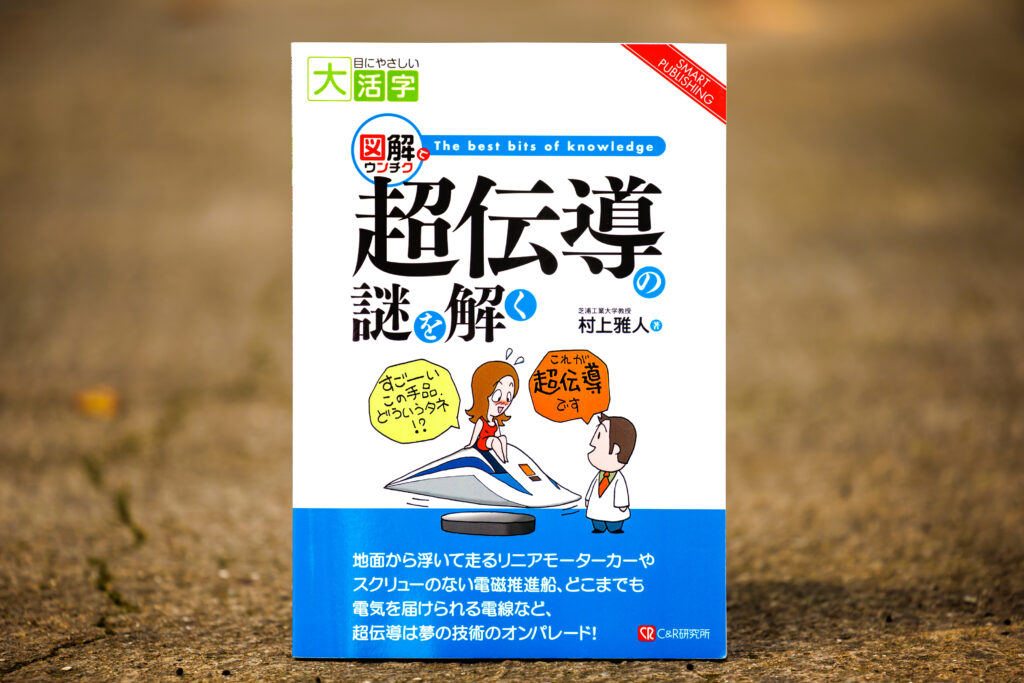
Professor Tomoaki Takao from the Faculty of Science and Technology conducts research on superconducting magnets used in magnetic resonance imaging (MRI) and the linear motor car, Japan’s high-speed maglev train. He talks about the significance of creating magnets using materials with zero electrical resistance, possibilities for contributing toward next-generation energy technologies, and future issues.
Superconductivity is a phenomenon that appears when certain metals, alloys, and such are cooled to extremely low temperatures below minus 200 degrees Celsius. Once a certain temperature is reached, electrical resistance suddenly becomes zero. Among the chemical elements, metals such as mercury, lead, and niobium are superconducting materials with this property.
As copper used in the electric cords of home appliances is not a superconducting material, its electrical resistance will never reach zero no matter how much it is cooled. Copper wire becomes hot when electricity flows through it due to resistance. In other words, the flow of free electrons in copper is being affected by lattice vibrations.
On the other hand, we can think of materials in a superconducting state as having pairs of electrons. The first electron in each pair is affected by the lattice and slows down, but the second electron speeds up, resulting in a net zero gain or loss for the pair. Therefore, it does not become hot even when there is a lot of electricity flowing through.
Superconducting magnets, which use wires made from superconducting materials, were created based on this property. Given that the strength of a magnet is proportionate to its current, if the coil is made using a superconducting material that allows a high flow of electricity, it will result in a magnet with correspondingly high strength. The linear motor car is able to levitate because of the power of superconducting magnets.
Thinking of ways to dissipate heat efficiently and maintain a superconducting state

Currently, I am undertaking research on ways to stably maintain a superconducting state when the temperature of a superconducting magnet has increased for some reason, by quickly dissipating the generated heat to the surroundings so as to lower the temperature. Specifically, this entails placing materials with good thermal conductivity inside magnets to prevent temperature rise. The key is to think about where to place these materials and the shapes to use so as to achieve efficient cooling. When I presented the results of my research in the US recently, I was told that this is a unique and very interesting theme not found in other research institutions.
Superconductivity research saw a period of boom in the late 1980s, when I was a graduate school student, due to a series of discoveries regarding materials that achieve superconducting states even when at relatively high temperatures. Now, the time has come to take the next step and enter the stage of using research results to give back to society. In other words, it is time to connect research to society.
Expecting contributions to electric flight and nuclear fusion—possibilities expanding from open ideas
Like how MRI creates cross-sectional images of the body using the strong magnetic fields of superconducting magnets, in the next few decades, we may see knowledge gained from superconductivity research being of use to society. For example, research is being undertaken to replace aircraft jet engines with superconducting motors, with prospects for reducing carbon dioxide emissions in the field of transportation.
There is also nuclear fusion energy, a next-generation technology for power generation. While there is still some way to go before practical application, there are high expectations on the method of using the power of superconducting magnets to seal plasma needed for nuclear fusion.
In searching for ways to give back to society, there are issues regarding improving the quality of superconducting materials and reducing the cost of development, and we have to deal with each of these issues properly. Collaboration between manufacturers and researchers with specialized knowledge is also necessary to create superconducting magnets that can be used by society. Going forward, besides experience as a researcher, I hope to apply new and open ideas—obtained through joint research with other agencies and opinion sharing with people from other sectors—in my research.
The book I recommend
“Me ni Yasashii Daikatsuji Zukai de Unchiku: Chōdendō no Nazo wo Toku”(Smart Publishing: Knowledge in Pictures—Solving the Mystery of Superconductivity)
by Masato Murakami, C&R Institute in Corporation

If you can understand 80% of this book and explain it to others, you would have sufficient basic knowledge about superconductivity. When you have an interest in a new area, it is good to start by reading general educational books like this one, which I also recommend to students in my laboratory.
-
Tomoaki Takao
- Professor
Department of Engineering and Applied Sciences
Faculty of Science and Technology
- Professor
-
Graduated from the Department of Electrical Engineering, Faculty of Engineering, Yokohama National University, and received his Ph.D in Engineering after completing the doctoral program in electrical and computer engineering at the university’s Graduate School of Engineering. Took on several positions—such as lecturer at the Department of Electrical and Electronics Engineering, Faculty of Science and Technology, Sophia University—before assuming his current position in 2003.
- Department of Engineering and Applied Sciences
Interviewed: September 2022